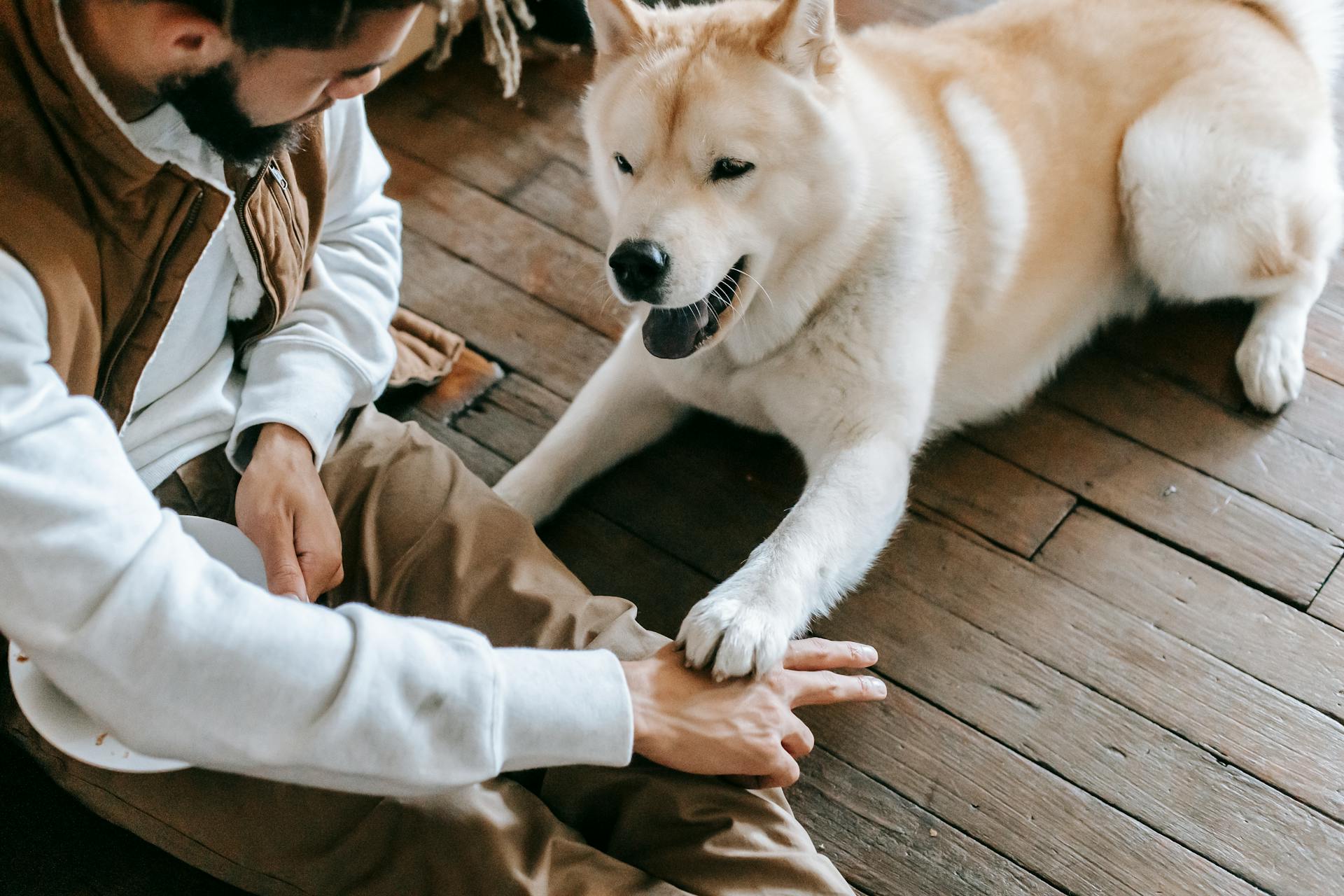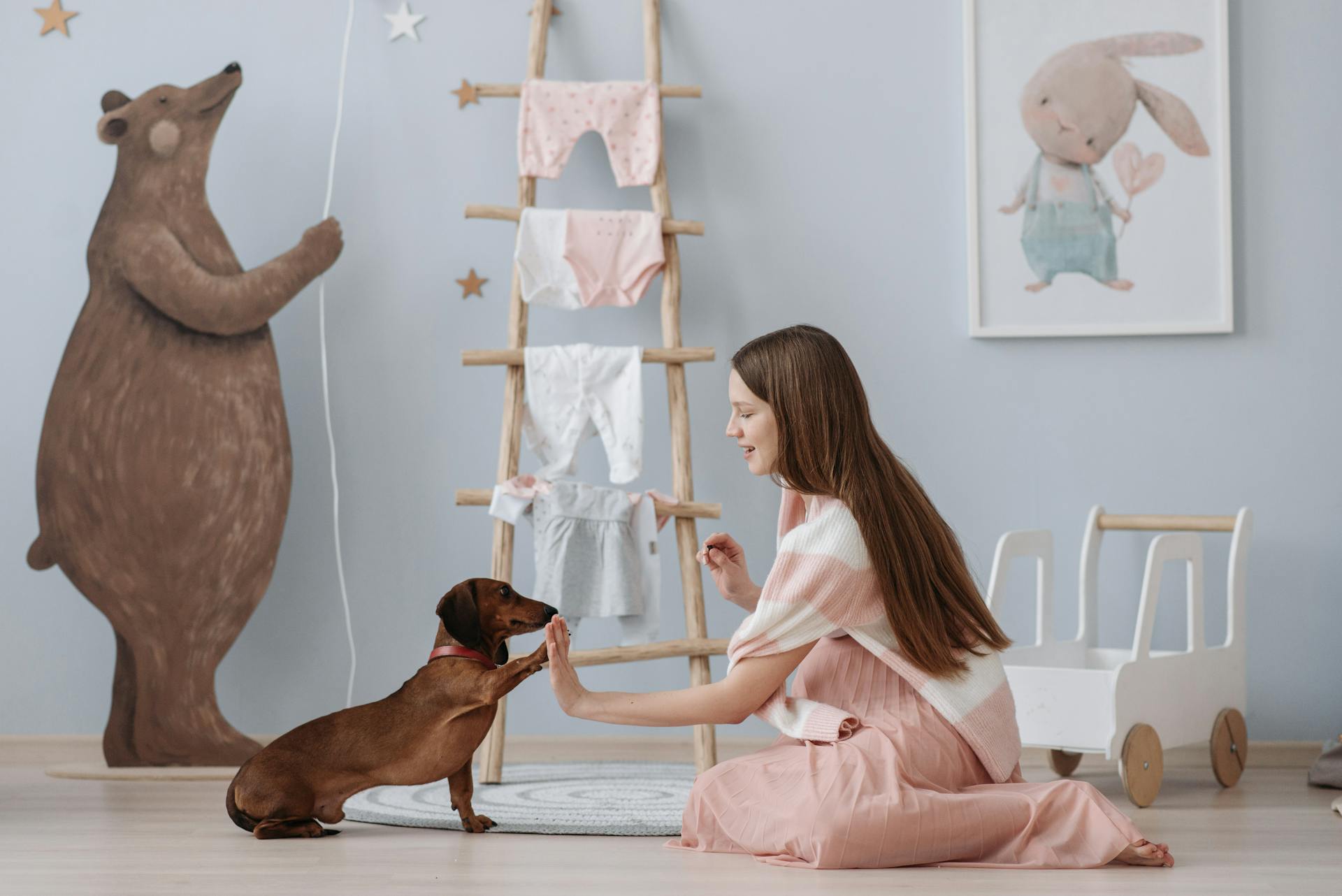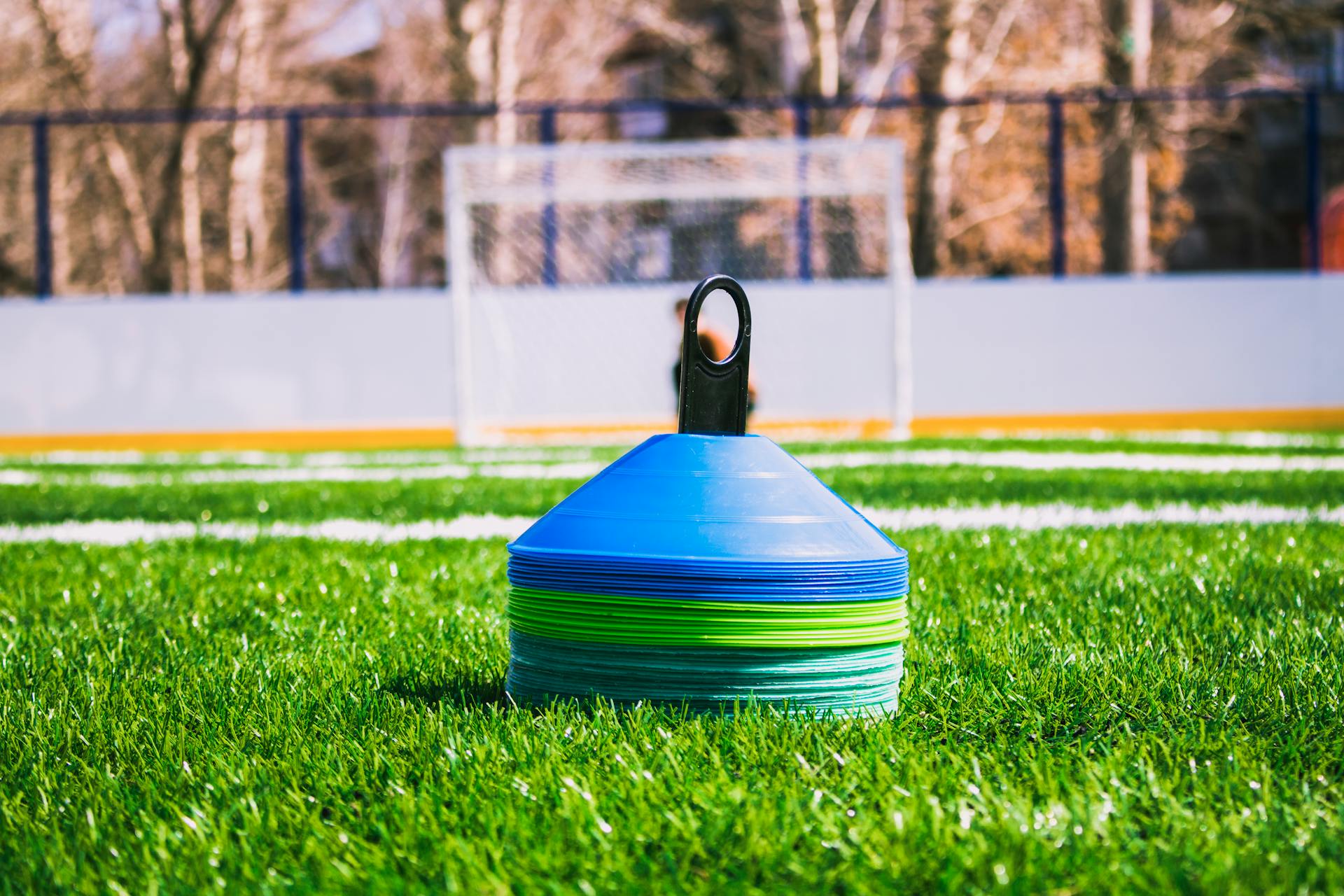
New puppy owners often underestimate the importance of establishing a routine. A consistent schedule helps puppies feel secure and develop good habits.
To create a harmonious environment, Cesar Millan recommends setting clear boundaries and rules. This helps puppies understand what is expected of them.
A calm and assertive energy is essential for effective communication with your puppy. By projecting confidence and calmness, you can establish trust and respect.
Exercise and mental stimulation are crucial for puppies, helping to burn off excess energy and prevent behavioral problems. Cesar Millan suggests providing at least 30 minutes of exercise and playtime daily.
Training Essentials
Cesar Millan emphasizes the importance of being the pack leader, characterized as "calm & assertive". This calm and assertive demeanor is key to establishing a strong bond with your puppy.
Puppies are adorable, but their cuteness quickly fades when they exhibit behavioral issues like chewing up your belongings or refusing to listen. No one wants to come home to find their favorite pair of shoes chewed to oblivion.
To prevent these issues, it's essential to establish a strong pack leader role early on. Cesar Millan recommends using a no-pull leash, such as the PetSafe Gentle Leader Padded No-Pull Dog Headcollar, which guides your dog to focus on you and your commands.
Sixty percent of the brain is controlled by the nose, according to Cesar Millan, and using a no-pull leash helps redirect your dog's gaze toward you. This encourages your dog to concentrate on your instructions.
Cesar Millan is not a big fan of harnesses because they allow the dog to lead instead of you leading the dog.
A different take: No Pull Dog Harness Training
Puppy-Specific Training
Puppies can start training at around eight weeks old, and it's essential to keep training sessions simple and short, lasting just five to ten minutes.
Training should be fun and engaging for your puppy, so try using positive reinforcement techniques like treats and praise to encourage good behavior. Consistency is key, so make sure to have short training sessions several times a week.
Here are some practical tips for training your puppy:
- Say your puppy's name or the word "come" and give them a treat when they respond.
- Drop a treat on the floor near you and say their name/come again, then give them another treat when they look up.
- Gradually increase the distance and difficulty of the training exercises, always rewarding your puppy with praise, treats, or play.
Remember to be patient and adapt your training style to your puppy's individual needs and personality. With consistency and positive reinforcement, you can help your puppy become a well-behaved and loving companion.
The Puppy
Puppies can start training at around eight weeks old. This is a crucial time to establish good habits and prevent behavioral issues.
Training sessions should be kept simple and short, lasting just five to ten minutes. This will help keep your puppy engaged and prevent them from getting overwhelmed.
You can start training your puppy by teaching them to respond to their name or a verbal cue, such as "come." This can be done using a technique from the AKC, which involves repeating the word and giving a treat.
Here's a step-by-step guide to teaching your puppy to respond to their name or "come":
- Sit with your puppy and say their name or the word "come."
- Each time you say "name/come", give your puppy a treat. They don't have to do anything yet! Just repeat the word and give a treat.
- Next, drop a treat on the floor near you. As soon as your puppy finishes the treat on the ground, say their name/come again. When they look up, give them another treat.
- Repeat this a couple of times until you can begin tossing the treat a little further away, and they can turn around to face you when you say their name/come.
- Once your puppy can turn around to face you, begin adding movement and making the game more fun! Toss a treat on the ground and take a few quick steps away while calling your puppy's name/come.
- When they catch you, give them a lot of praise, treats, or play with a tug toy. Coming to you should be fun!
You can also use real-life rewards like play, praise, cuddles, or toys mixed in with training treats to make the training more effective. Consistency is key, so make sure to have short training sessions several times a week.
How to Train a Dog to Come
Training your puppy to come is one of the most essential commands you can teach them. Choose a recall verbal cue, like "come" or "here", and stick to it.
Start your training in a slow, low-distraction environment, like inside your house. This will help your puppy focus on you.
Show your puppy a toy or a treat, praise them as they come to you, then reward them. After a few repetitions, add in your chosen verbal cue when you're confident they're moving towards you.
Reward your puppy with a high-value treat like chicken, cheese, or beef liver when they get to you. This will make them associate the command with a positive outcome.
As you get more comfortable, you can try adding distance within your low-distraction environment.
Related reading: Dog Treat Training
Walking
Walking is crucial for your puppy's physical and mental well-being, just like it is for humans.
Cesar Millan advises walking your dog every day for an hour, but even a brisk walk is better than nothing.
Walking your puppy the wrong way can undo any leadership work you do at home. This is because, in nature, the leader of the pack always walks in front.
Make sure your puppy walks beside or just behind you, not in front, to establish clear leadership.
Training Styles and Temperament
Cesar Millan's approach to dog training emphasizes the importance of becoming the pack leader, a role characterized as "calm & assertive." This is essential for creating a harmonious relationship between you and your puppy.
To achieve this, you need to understand your puppy's temperament and find the right teaching style. Puppies are adorable, but their behavior can quickly become frustrating if not addressed.
Cesar Millan, one of the world's most renowned dog trainers, offers a range of training methods that cater to different temperaments. By applying the right balance of teaching styles, you can help your puppy grow into a well-behaved and lovable companion.
Teaching Styles by Temperament
Cesar Millan's approach to dog training emphasizes the importance of being a calm and assertive pack leader. This style helps dog owners establish a strong bond with their dogs and encourages good behavior.
To achieve this, Cesar Millan recommends taking on the role of the pack leader, which is characterized as calm and assertive. Puppies, in particular, need guidance to learn good manners and prevent behavioral issues.
On a similar theme: Are Clickers Good for Dog Training
Puppies are adorable, but their cuteness quickly fades when they exhibit behavioral problems like chewing up belongings or not listening to their owners. By teaching them good habits from an early age, you can prevent these issues and strengthen your bond with your dog.
Some teaching styles may work better for certain temperaments, so it's essential to find the right balance for your dog's personality. Cesar Millan's approach can be effective for many dogs, but you may need to adapt it to suit your dog's unique needs.
Nobody wants to come home to find their favorite shoes chewed to oblivion, and with Cesar Millan's guidance, you can prevent this from happening. By being a calm and assertive pack leader, you can encourage good behavior and a happy, healthy relationship with your dog.
Intriguing read: Is Crate Training Good for Puppies
The Playful One
You can turn training into a game! One way to do this is by teaching your dog the recall basics, then taking it a step further. Instead of calling your dog while you're standing in front of them, try calling them from another room. It's like hide-and-seek! When your dog finds you, act excited and give them rewards!
Making training fun is a key part of Cesar Millan's approach, one of the world's most renowned dog trainers. By incorporating games and interactive activities, you can create a positive and engaging experience for both you and your dog.
To take the game to the next level, try mixing up the location and environment where you play with your dog. This will help keep them engaged and interested in the game. For example, you could call your dog from the backyard or from a different room in the house.
Frequently Asked Questions
How to discipline a puppy with Cesar Millan?
To discipline a puppy with Cesar Millan, provide a calm space and consistently follow through with training. This approach helps establish clear boundaries and a strong bond between you and your puppy.
Does Cesar Millan recommend crate training?
Yes, Cesar Millan recommends crate training as a crucial step in the early stages of a puppy's life, especially when combined with housebreaking. Crate training should be started in the first weeks after bringing a puppy home.
How to stop a puppy from biting kids?
To stop a puppy from biting kids, intervene promptly by calling the puppy's name in a high-pitched voice or clapping to get her attention. Redirect her to toys and food puzzle toys to refocus her energy and prevent nipping.
How to stop a puppy biting you?
Stop puppy biting by staying still and calm, then withdraw attention and give them space to calm down. If biting persists, try moving away and letting them settle before re-engaging
Sources
- https://nypost.com/article/best-dog-puppy-products-per-experts/
- https://www.puppyinstitute.com/dog-trainer/cesar-millan/cesar-millan-puppy-training
- https://www.upi.com/Entertainment_News/TV/2023/01/01/cesar-milan-dog-training-month/2511671657248/
- https://www.audible.co.uk/pd/Dog-Training-The-Pack-Leaders-Way-The-Cesar-Millan-Konrad-Lorenz-Revolution-Audiobook/B07KMJLRGK
- https://www.houndslounge.com/blog/how-to-teach-your-dog-to-come-reliable-recall-training/
Featured Images: pexels.com

